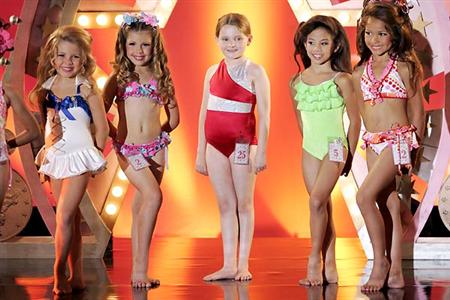While reading Scott McCloud’s Understanding Comics, I was most
interested in the segment analyzing how realism and cartoons differ, as well as
how they borrowed from each other in graphic novels. McCloud explains how the
artwork and characters become an extension of the reader, by developing a
system of relatable icons that are abstracted by stripping them down to
specific details. When live-action films adopt this method into their art
direction, they can bear a resemblance to cartoons. The iconic film The Wizard of Oz was observed as an
example of this practice. I would also consider the 2006 film Little Miss Sunshine an example as well:
all the protagonists are simplified (but not flat) and they each have one goal
that is resolved, and one goal that they all share and fulfill together.
Olive from Little Miss Sunshine, center,
upon realizing her goal of winning a regional child beauty pageant may be
threatened by her over-sexualized contestants
McCloud further elaborates how
humans relate to cartoons and objects, explaining how our brains are
hard-wired to detect pattern recognition, specifically that of human faces. All
it takes to make the connection is a simplified eye or two, and a line to
symbolize a mouth. The “smiley face” is universally recognized as human or as a
human face, despite it lacking almost all vital components of a human face, and
the fact that this face is usually disembodied. This icon may be highly
relatable, but it failed to humanize Wal-Mart as it represented the corporation's biggest selling point from the mid-90s to the mid-00s.
“The
cartoon is a vacuum into which our identity
and awareness are pulled…an empty shell that we inhabit which enables us to travel in another realm. We don’t just observe
the cartoon, we become it!”
-Scott
McCloud, Understanding Comics
On the other hand, cartoons that
acquire characteristics of realism have their concepts as cartoons traded for an appearance that the reader can
perceive as “having life.” A cartoon drawn realistically assumes a different
identity than the icon, being depicted with every detail available, instead of
preserving only a few specific traits.



